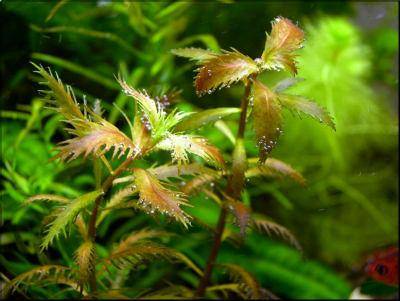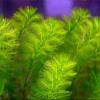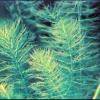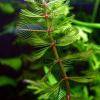Proserpinaca palustris
Scientific name: Proserpinaca palustris
Family: Haloragaceae
Maximum size reached under cultivation: 10 - 40 cm (3.94 - 15.75 inch)
014
Recommended pH range: 5 - 7.5
Recommended water hardness: 0 - 12°dGH (0 - 214.29ppm)
0°C 32°F30°C 86°F
Recommended temperature range: 15 - 28 °C (59 - 82.4°F)
Preferred propagation method: Cuttings
Native to: Central America
Growth rate: Fast
Recommended substrate: Fine gravel
Lighting requirements: Bright
Ideal placement in tank: Background
Common Name
Mermaid Weed
Origin
Proserpinaca palustris originates from North and Central America, where it inhabits marshes, ponds, swamps, and slow-moving waterways. It grows in both emersed and submerged conditions depending on water levels and season. This species is especially appreciated in aquascaping for its decorative and variable foliage.
Growing Conditions
Proserpinaca palustris can thrive in both submerged and emersed environments. When grown submerged, it develops finely divided, feather-like leaves with coppery, reddish hues — a striking contrast to typical green plants. In its emersed form, the leaves are broader, lighter green, and sometimes display serrated edges.
For optimal growth and coloration, provide this plant with bright lighting. Under insufficient light, the plant may lose its lower leaves or grow sparsely. It prefers slightly acidic to neutral water with a pH range of 5 to 7.5 and water hardness between 0 - 12 dGH. Temperature tolerance is broad — from 15 to 28 °C (59 - 82.4°F) — making it suitable for both tropical and temperate aquariums.
Planting Area
Due to its vertical growth and colorful appearance, Proserpinaca palustris is best suited for the background of medium to large aquariums. It adds texture and visual interest with its delicate leaves and copper-toned stems. Plant in groups for a more impactful effect, but allow space for light to reach lower leaves.
Propagation
This species is easily propagated by taking cuttings from healthy stems. Simply trim the top portion of the plant and remove the lower leaves. Insert the cutting into fine gravel substrate, ensuring the stem isn’t crushed. The new plant will root within a few days to weeks under suitable conditions. Even single leaf nodes can sometimes generate new roots if given enough nutrients and light.
Difficulty
Proserpinaca palustris is rated as moderately difficult to grow. While it is not overly sensitive, it does require consistent lighting and water parameters. Occasional trimming and nutrient supplementation (including iron) may be needed to maintain lush growth and prevent leaf drop.
Short Description
Proserpinaca palustris, commonly known as Mermaid Weed, is a fast-growing aquatic plant admired for its coppery, feather-like submerged leaves and its ability to adapt to various water conditions. It makes a dramatic statement in background planting and is ideal for aquascapers seeking color and texture. Although it requires bright light and stable conditions, its ornamental value makes it worth the extra care.
This plant can be grown emersed in paludariums or open-top tanks, where it may develop simpler, more serrated leaves. Its submerged form, however, is especially decorative and sought after for display aquariums. Regular trimming and careful nutrient balance will keep this plant thriving.

 Myriophyllum aquaticum
Myriophyllum aquaticum Myriophyllum hippuroides
Myriophyllum hippuroides Myriophyllum spicatum
Myriophyllum spicatum